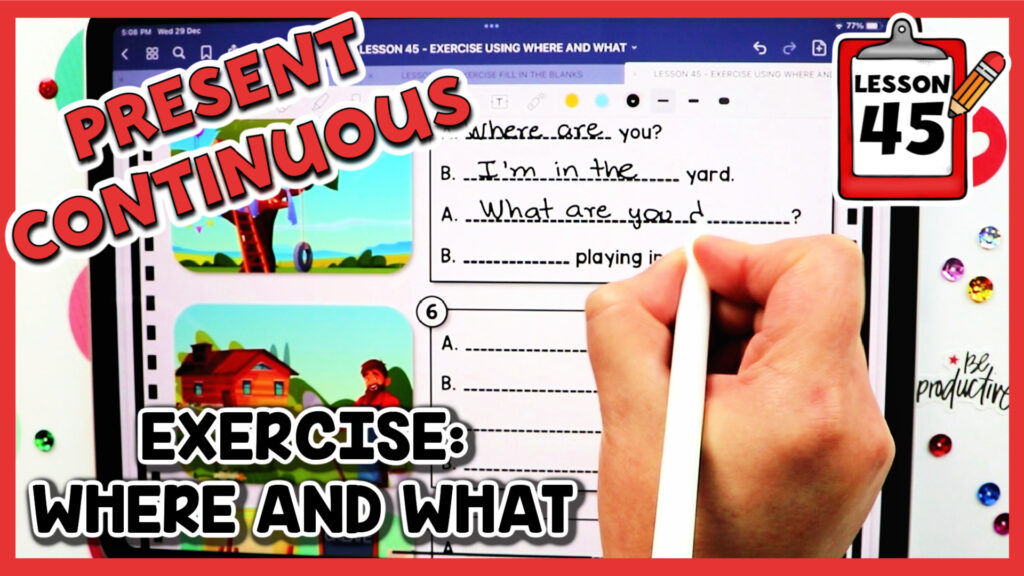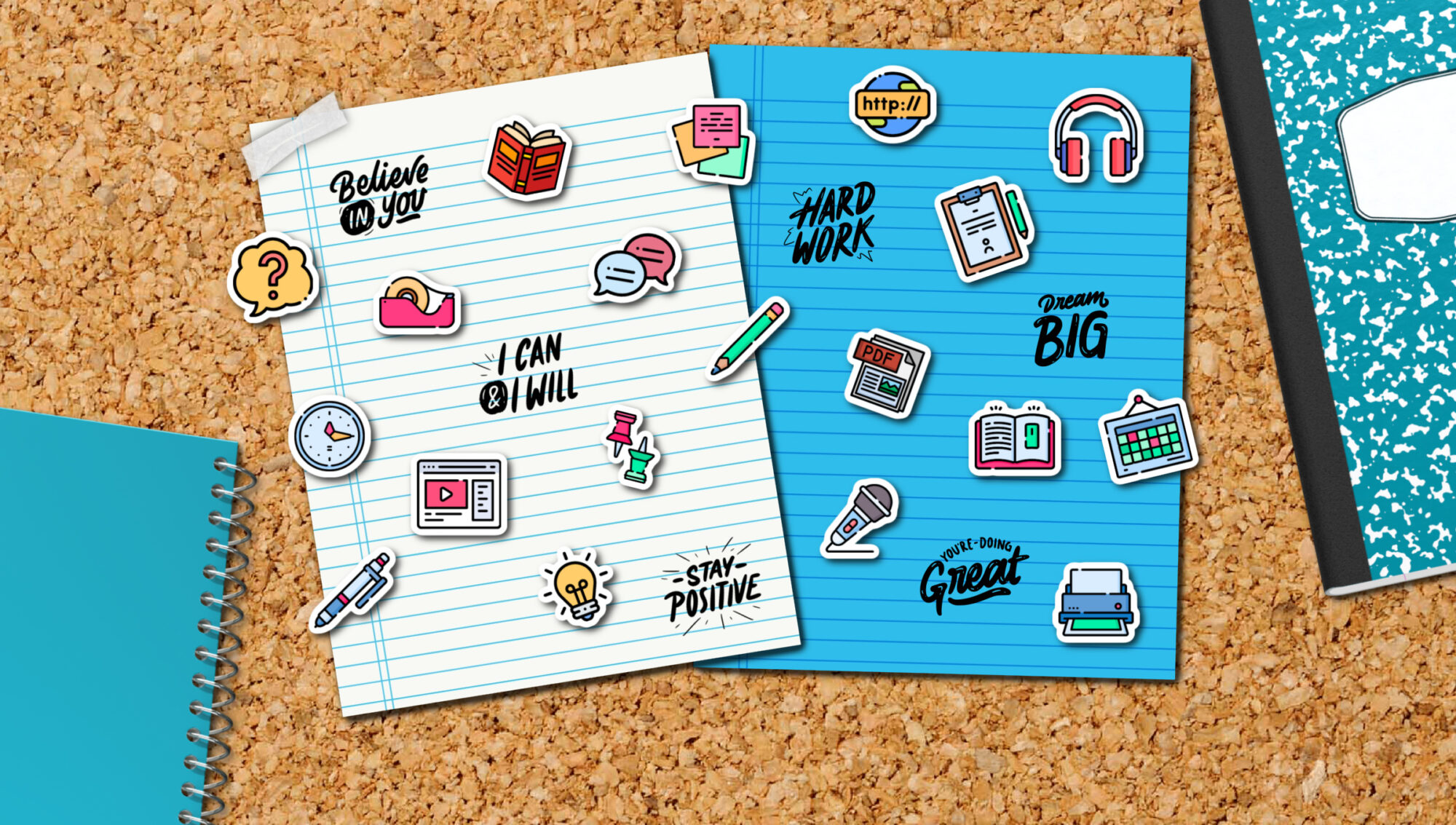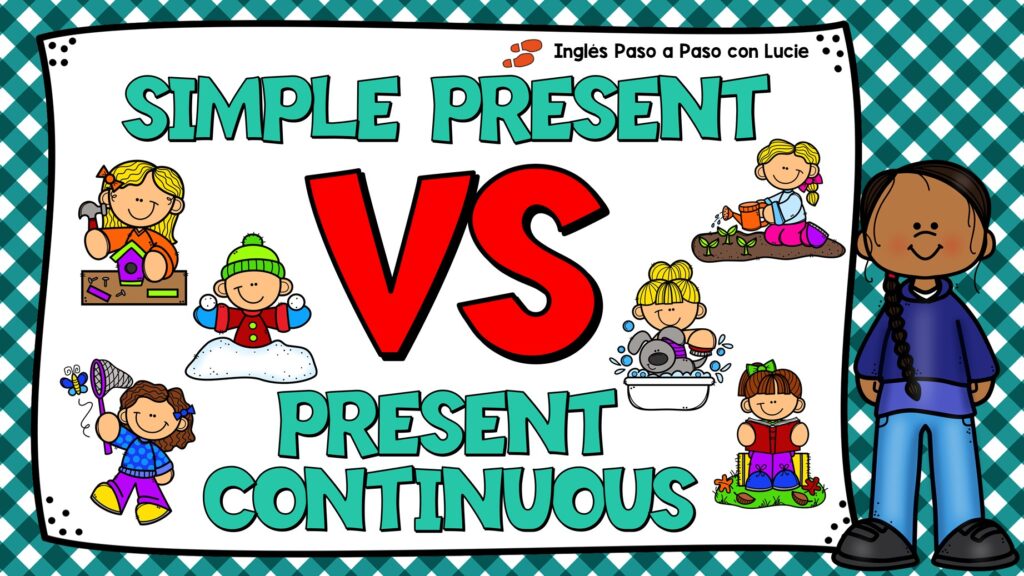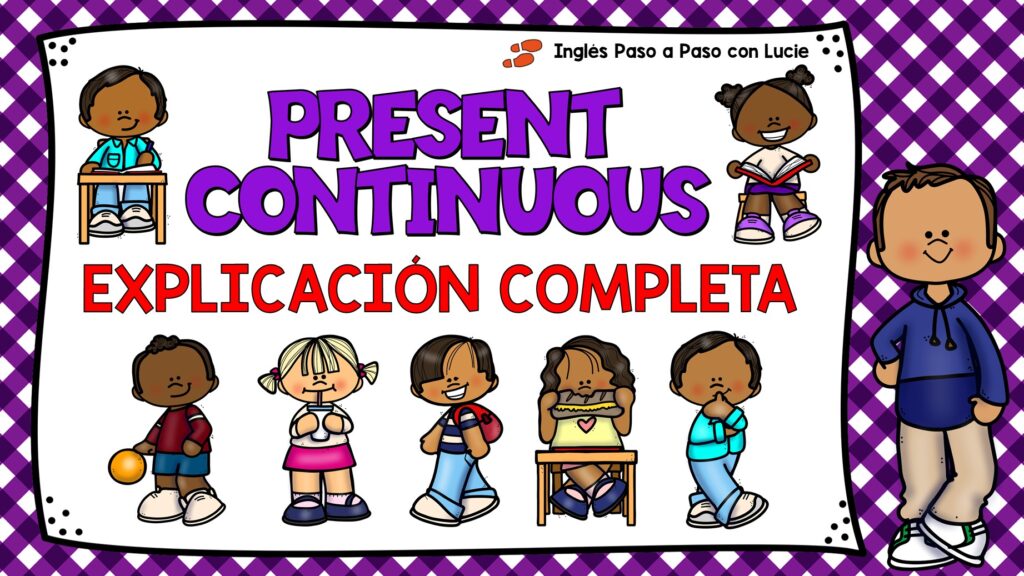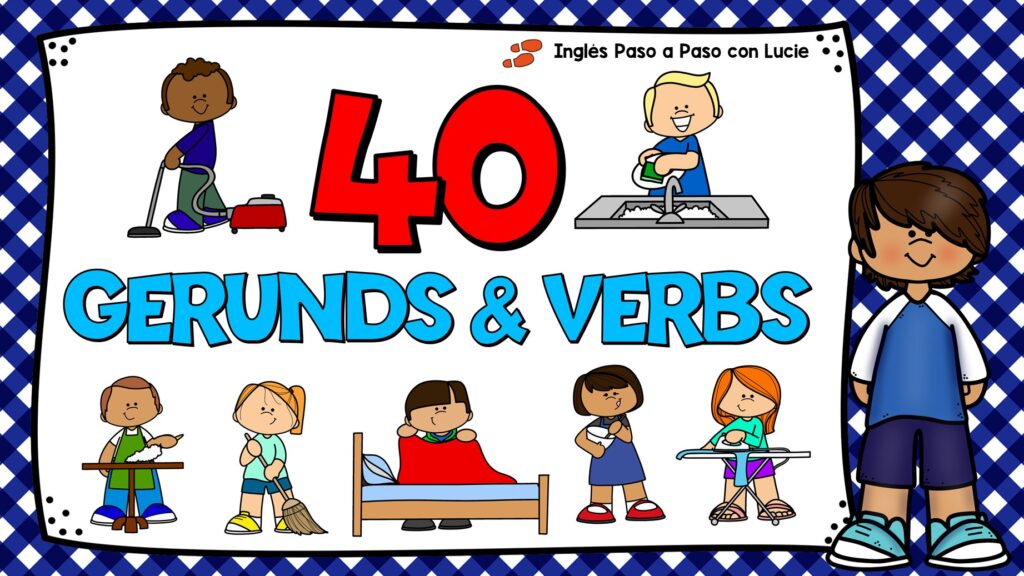PRESENTE CONTINUO EN INGLÉS: PRESENT CONTINUOUS
Con estas lecciones aprenderás a usar el Presente Continuo en inglés con oraciones afirmativas, negativas, Yes / No Questions y Short Answers.
LECCIÓN 40: ORACIONES AFIRMATIVAS Y CONTRACCIONES
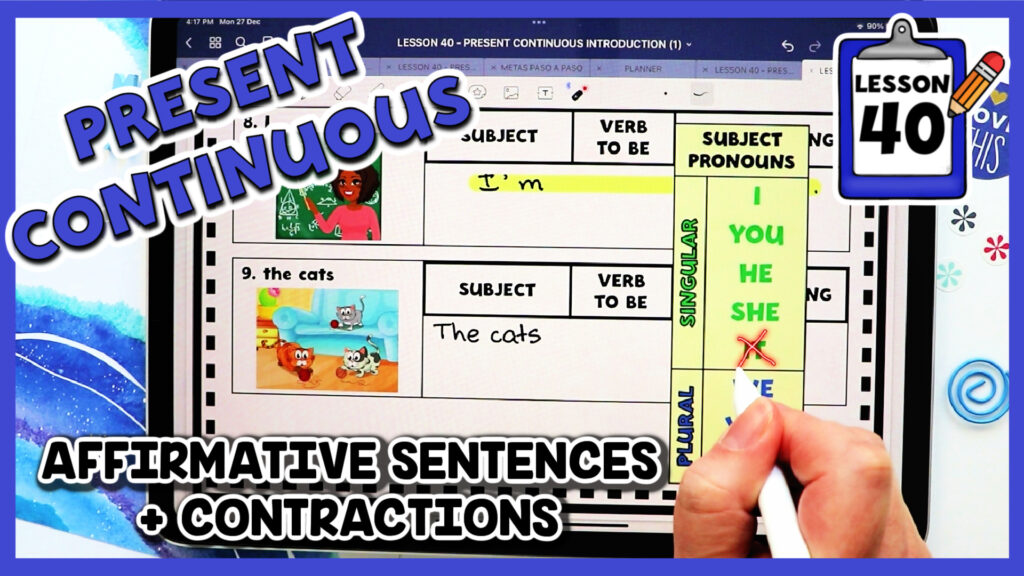
GUÍAS DE ESTUDIO:
LECCIÓN 41: ORACIONES NEGATIVAS Y CONTRACCIONES
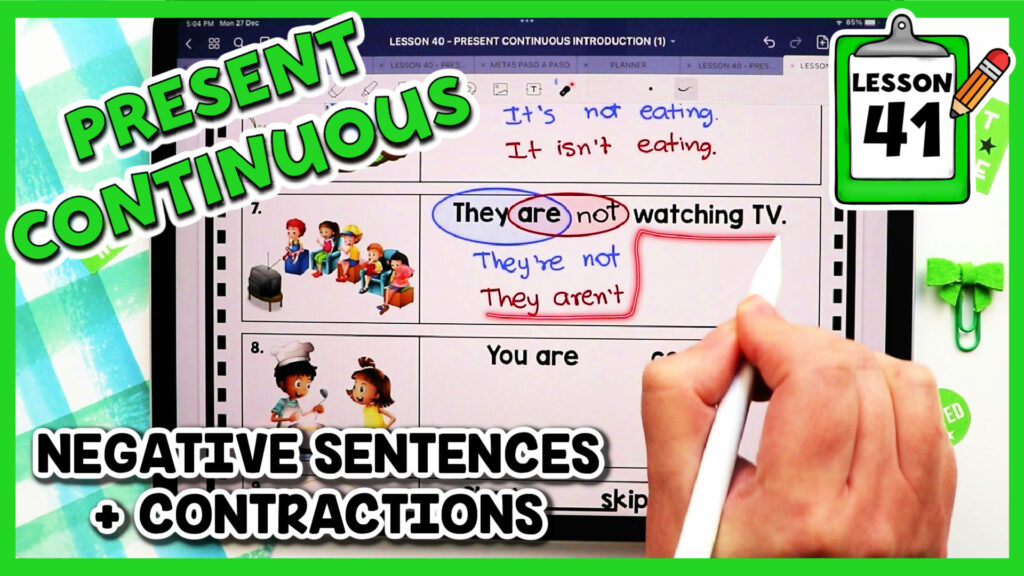
GUÍAS DE ESTUDIO:
LECCIÓN 42: YES / NO QUESTIONS AND SHORT ANSWERS
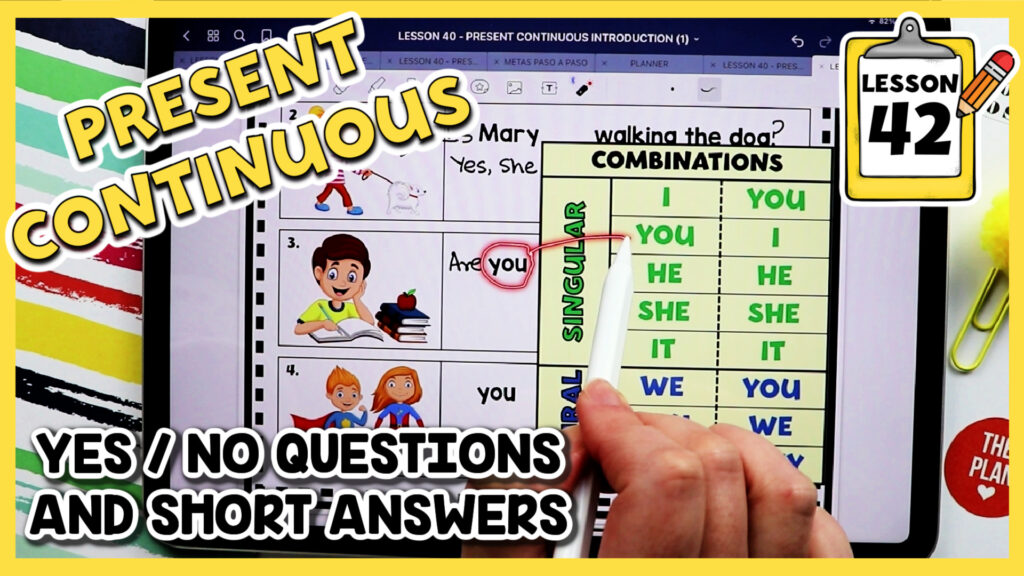
GUÍAS DE ESTUDIO:
LECCIÓN 43: INFORMATION QUESTIONS
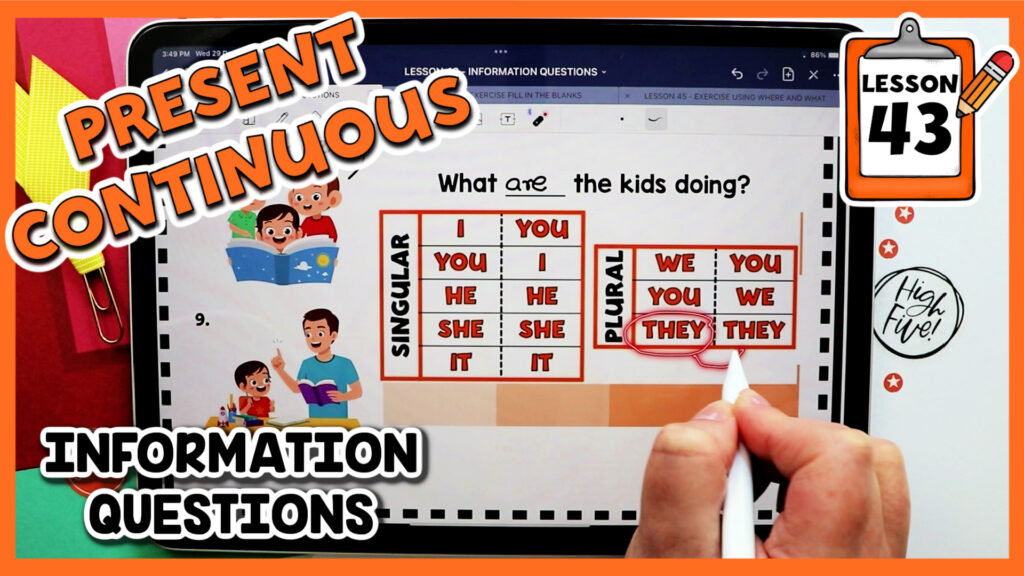
GUÍAS DE ESTUDIO:
LECCIÓN 44: EJERCICIO – FILL IN THE BLANKS
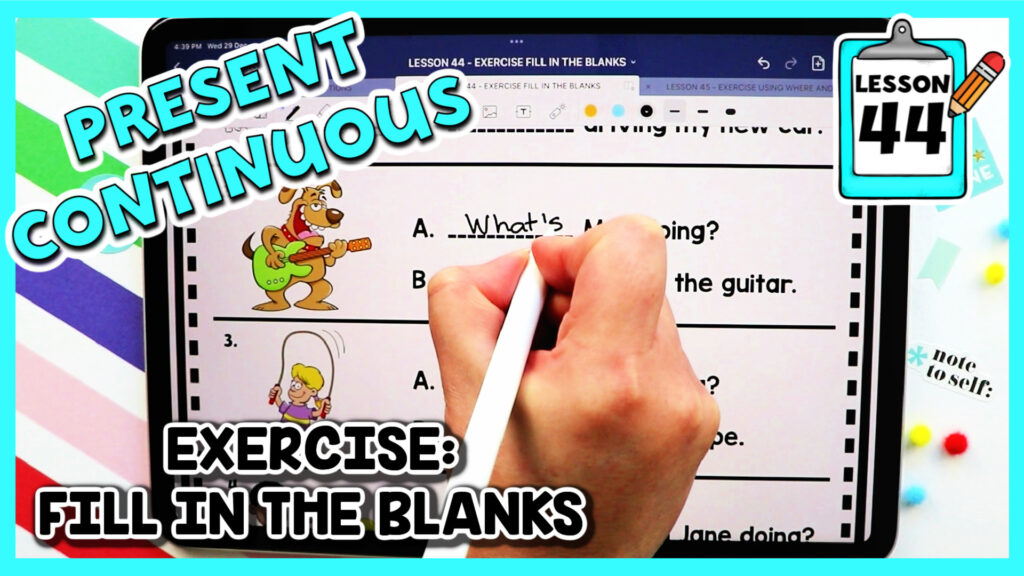
GUIAS DE ESTUDIO:
LECCIÓN 45: EJERCICIO CON WHERE Y WHAT
